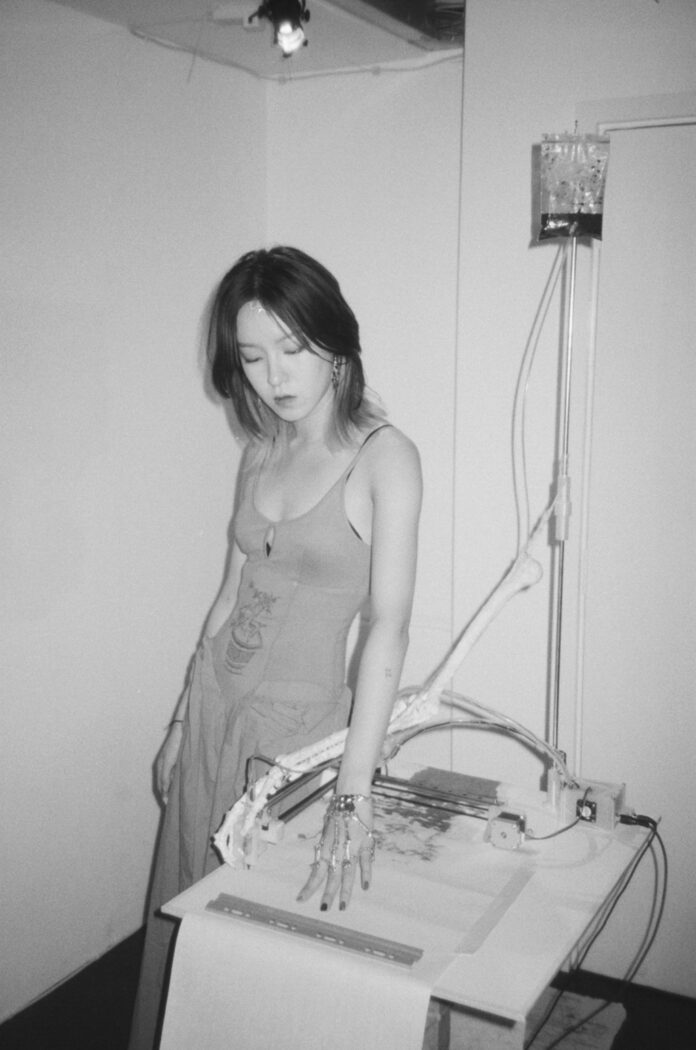In Ruilin Fu’s artistic world, plants breathe, sculptures move, and stories unfold not through words alone, but through the subtle interplay of memory, migration, and embodied experience. Her interdisciplinary practice is a quiet yet powerful force—one that fuses feminist critique with technological experimentation, diasporic perspectives, and a deep commitment to care.
Her practice emerges from a transnational perspective, rooted in her Chinese origin and diasporic experience. Fu’s work resists easy categorization. Trained across visual arts and digital media, she navigates installation, sound, and interactive systems with the fluency of someone who sees no boundary between the poetic and the political. Her practice is deeply personal, but never isolated—it speaks to wider structures, systems, and histories, especially as they relate to gender, motherhood, and migration.
Grafting Memory and Identity
One of Fu’s most resonant projects, Grafting, takes inspiration from the horticultural technique of binding one plant to another. In her hands, grafting becomes a poignant metaphor for cultural hybridization, bodily adaptation, and the often-fractured process of belonging. The multimedia installation combines audio oral histories from immigrant families with animations of growing plant limbs—each branching sequence echoing the entwined lives and memories of those who have moved across borders.
Rather than offering a singular narrative, Grafting invites viewers into an experiential landscape, where stories are layered and non-linear. As audiences move through the space, they are drawn into a web of sound, motion, and organic forms—each suggesting how memory takes root in the body and how displacement reshapes identity at every level.
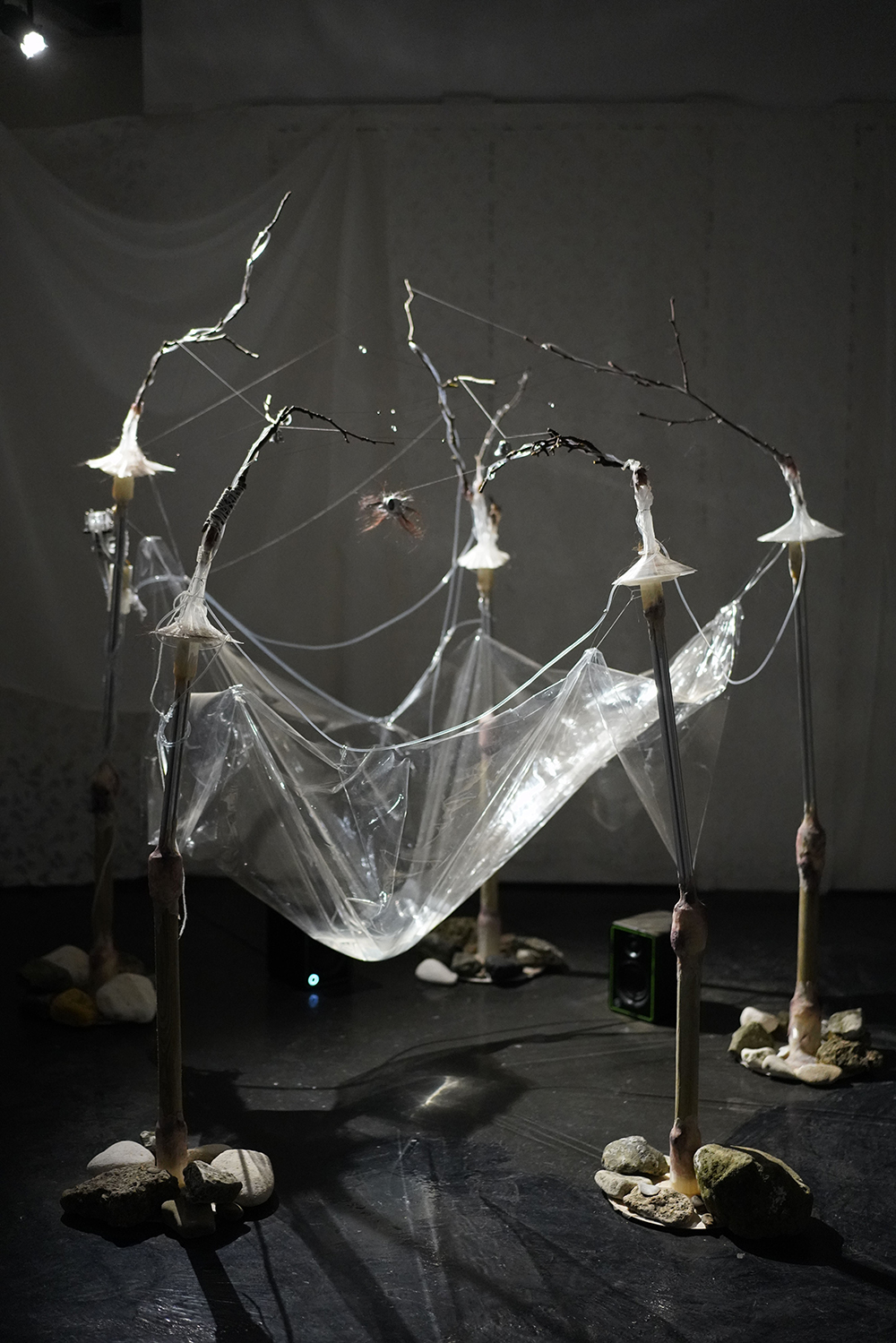
Mixed Media, Changeable
2023
Rethinking the Maternal Body
Fu’s exploration of motherhood is equally layered. In Mama I, a gently inflating and deflating sculpture breathes with uncanny rhythm, evoking a maternal form that is neither static nor symbolic, but alive, present, and political. The piece directly challenges traditional patriarchal ideals of motherhood—those that sanitize, romanticize, or silence the maternal experience.
Her follow-up work, Mama II, uses the growth patterns of plants to reflect on intergenerational inheritance: the ways care can both nurture and confine, protect and harm. The sculptural forms suggest regeneration but not without tension, as new branches emerge from old ones, evoking inherited trauma and the uneasy hope of renewal.
These pieces represent a growing body of work that fuses feminist theory with experimental technology, reshaping how maternal bodies are seen, understood, and politicized in contemporary art.
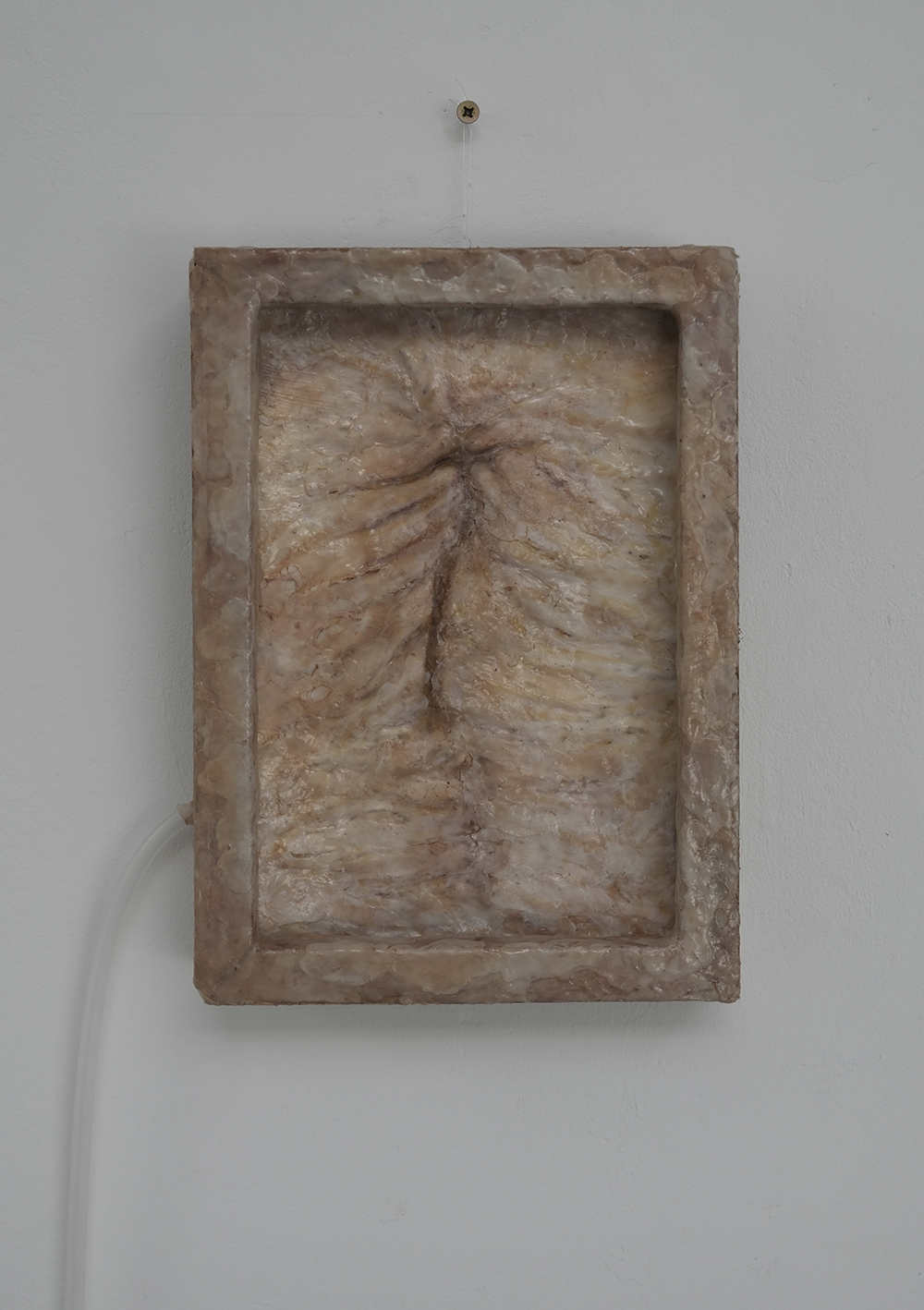
Mixed Media, 22*31*6 cm
2025
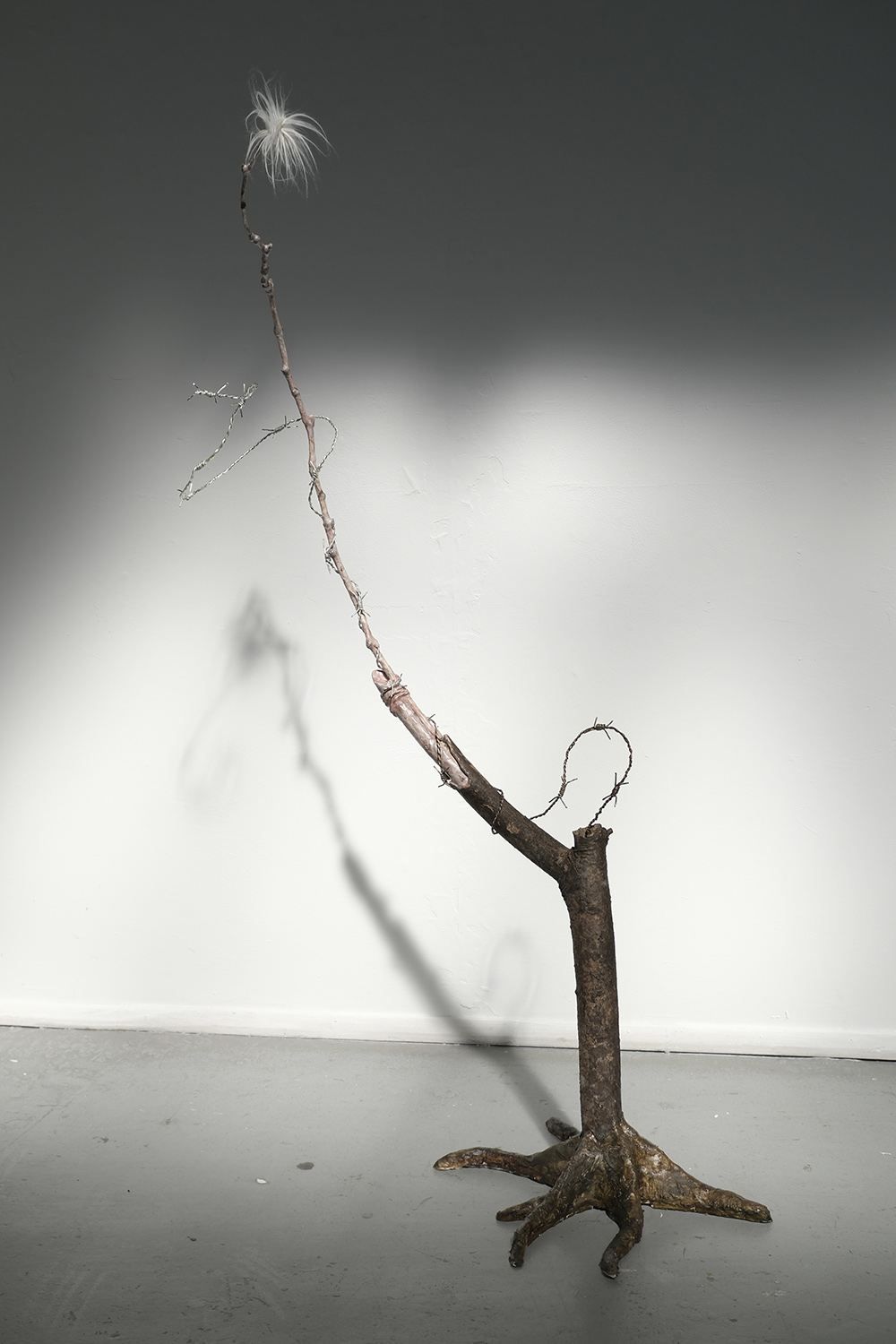
Mixed Media, 140*44*22 cm
2025
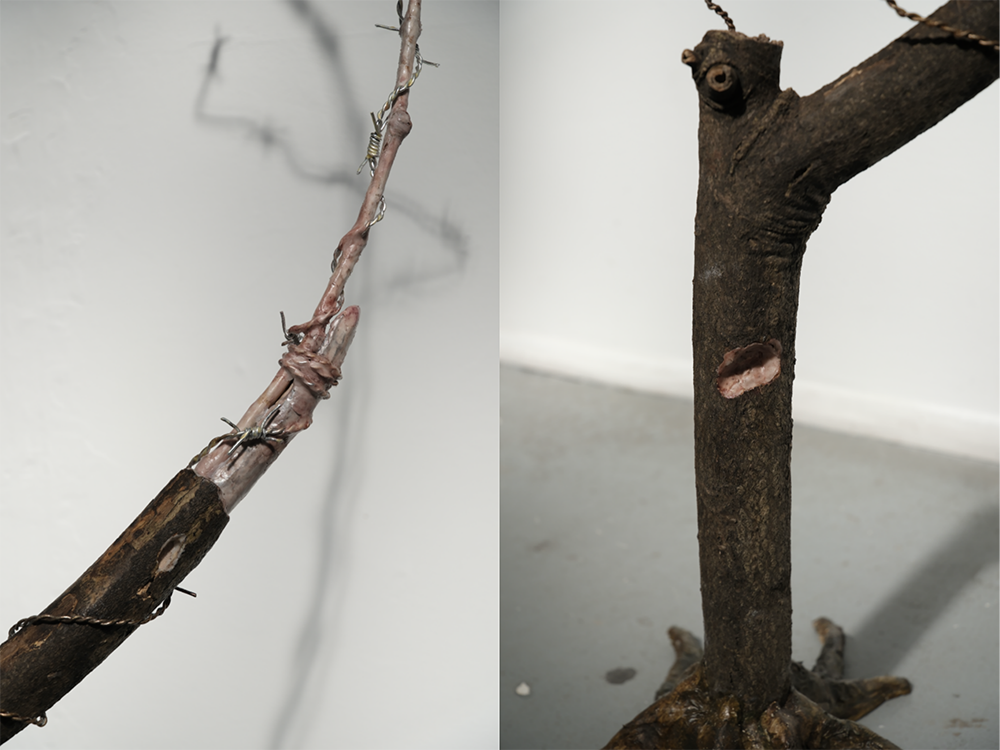
Mixed Media, 140*44*22 cm
2025
Feminism Across Borders
Fu’s exhibitions reflect a global conversation. From A Room of One’s Own (Safe House, 2022), to In Tandem (Cookhouse Gallery, 2023), to the community-centered show The Big Other and the Little Other (Torriano Meeting House, 2024), she consistently brings diasporic and feminist voices into spaces where they are often peripheral. Her works create conditions for intimacy and resistance to coexist—offering moments of quiet reflection amid urgent critique.
What makes Fu’s art so compelling is its ability to hold complexity without collapsing it. She does not reduce identity to a slogan or emotion to spectacle. Instead, her practice carves out space—both physical and conceptual—for contradiction, ambiguity, and vulnerability.
A Quiet Revolution
At a time when cultural narratives are increasingly polarized, Ruilin Fu’s work reminds us that personal stories are not small. They are sites of resistance, archives of survival, and catalysts for change. Her art does not shout—but it breathes, grows, and listens. And in doing so, it invites us to imagine different ways of being together, across borders, generations, and worlds.
